French styles in country architecture
France is a romantic country with picturesque landscapes, exquisite French cuisine and incredibly beautiful architecture.
We do facade design and can help you arrange a little France at home. In the meantime, let's tell you what it is.
The architecture of France has been shaped by the legacy of historical eras:
Romanesque, with its tendency to adorn facades with sculptures;
The Gothic, with its sweeping lancet windows and stained-glass windows;
Renaissance,with the construction of palaces with powerful broad horizontal walls;
Rococo - the beginning of construction of private houses of French aristocracy with luxury and desire for wealth, with high pilasters on the facades, roof balustrades, gables of different forms, moldings in the form of scrolls and floral garlands.
A considerable influence on the architecture of France had a regional style, which emerged in the provinces, faithful to local traditions and characteristics of the climate.
Taking into account the characteristics of the region traditionally distinguished the main varieties of houses in the "French style": Provence, Chateau, Norman style.
Provence
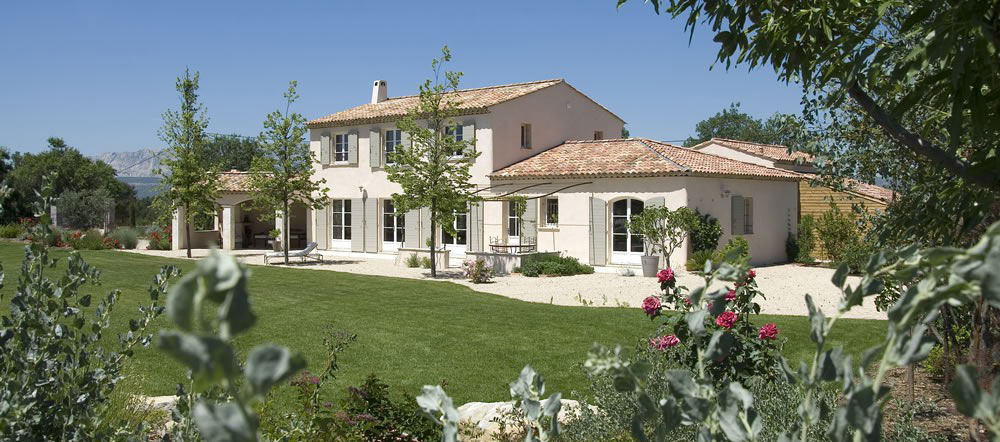
This style was formed in the south of France as a style of the French province, is considered a kind of style Country. However, Provence is more elegant and devoid of rough details. The houses are built from one to three floors of brick or stone (limestone).
In the external finishing of walls using plaster beige, milky, blue, lilac colors, wild stone booth or artificial, reminiscent of limestone, sandstone and slate, as well as natural wood - boarding (clapboard).
Houses in the Provencal style almost completely lack a porch and plinth. The path leading up to the house leads directly to the front doors.
Windows are usually small, narrow, with bright shutters that close tightly in the heat. However, modern designs, in what is known as Neo-Provence, suggest wide window openings to floor level.
The roof is pent roof with dormer windows, covered with shingles
In the decoration of the main entrance can be used artistic paintings on the theme of plant motifs.
The entrance door is usually massive, decorated with a forged and with a viewing window. In modern homes, glass doors with narrow bindings and wooden floor shutters are possible.
The Provence style is characterized by the presence of outbuildings. This can be a summer kitchen or an outbuilding. In Neo-Provence, it is possible to build two structures connected by a terrace.
Read more about all the details of the Provençal style and how to apply it to your home here.


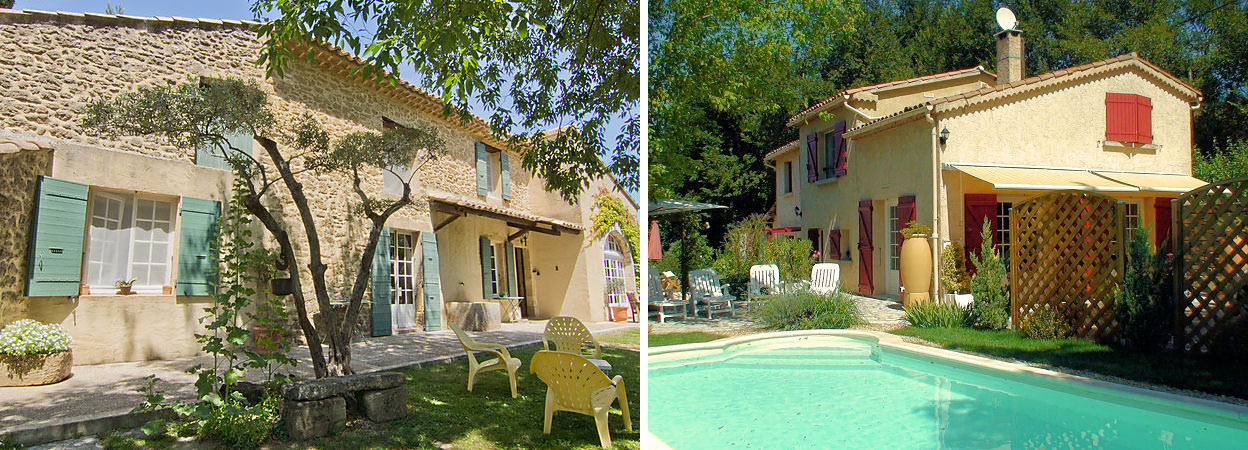
CHATEAU
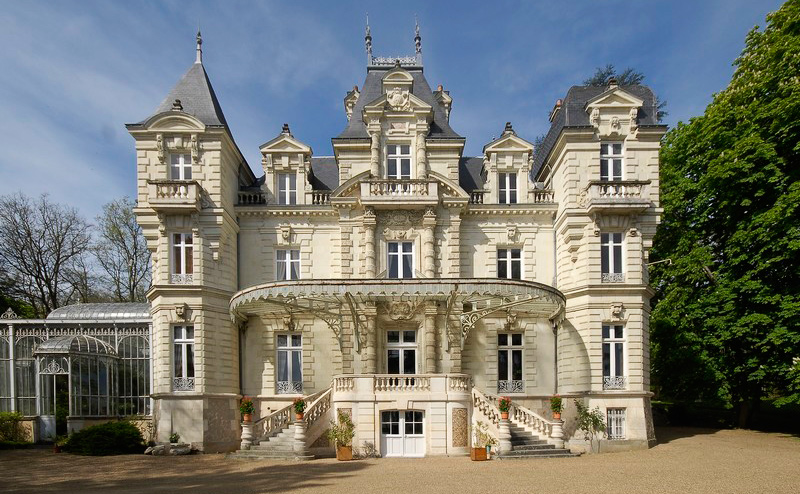
The Chateau style appeared as a French castle, a country estate of the aristocracy. The houses are thorough and beautiful mansions.
Such houses have a complex facade line with many bay windows, projections and arches, there are towers, pointed roofs with spires, numerous chimneys.
There are lancet windows on the attic floors. Dormers are also possible on multi-pitch roofs.
Entrance options are two: a solid wooden front door directly into the garden, or to the double arched doors leads to a wide staircase, often with double staircases.
A basement is mandatory in the building, used as a wine cellar or utility room, home theater or game room. However, from the outside of the building there is a sense of the absence of the basement, as it is not pronounced cladding.
On the second and higher floors there are many floor-to-ceiling French windows allowing maximum penetration of daylight.
Double doors on the second floor provide access to a wide balcony. Balconies can be small and placed on either side of the main entrance.
The house in the style of Chateau implies the presence of wings, which may be located a swimming pool with a recreation area or garage.
The colors of the facade are all held in warm, pastel colors. To finish the facade choose plaster or facade tiles.
In the château style homes are built pavilions, where the foundation is emphasized by the difference in color or cladding the foundation and walls with a richer color.




Norman Style
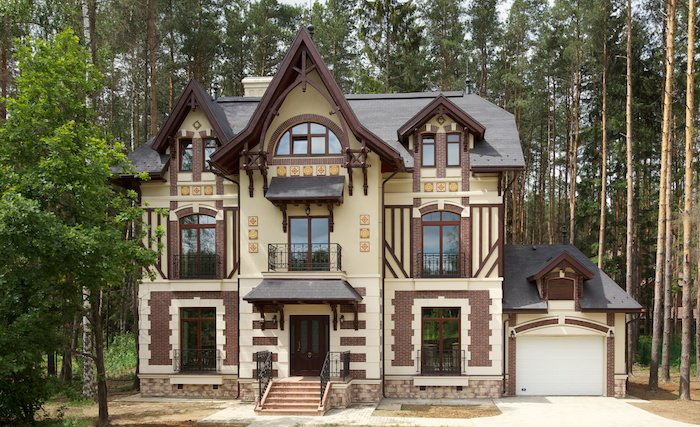
The Norman style was formed in northwest France, in the province of Normandy, whose population are mostly natives of the Nordic countries, descendants of the Vikings. Hence the severity and coldness of the architecture, the emphasis on the ancient Gothic forms.
The house can be one-story with an attic or have two or more stories with balconies, painted in the color of the casing.
The facade is decorated with figural, geometric or intertwined ornaments inlaid into the masonry facade.
Nowadays the use of fireclay ceramics is widespread.
The corners of the facade and window openings are finished with rusticated panels imitating stone.
A sign of the Norman style are hip roofs, with four pitches and wide gables. The roofs have attic windows, of the gable or gable-type, wrought iron ornaments, and conical turrets.
The windows are more often narrow, bound, with semicircular arches on the upper floors. Flower boxes on the windows, all enclosed by wide pediments.
A porch with wrought iron railings leads to the massive entrance doors.
Modern cottages are built of brick and clad with artificial stone or stucco.
Colors in Normandy are varied - ochre, brown, pink, and gray facades. In our country, calmer, sandy shades are popular.
Widespread use in the Normandy style techniques in Colombage (French version of the style of half-timbered houses). Wooden vertical posts on the wall pattern and the "Andrew's Cross" pattern (diagonal cross) are predominant here. In the modern design of the façade in the style of colombage, the use of polyurethane beams imitating dark wood is possible.
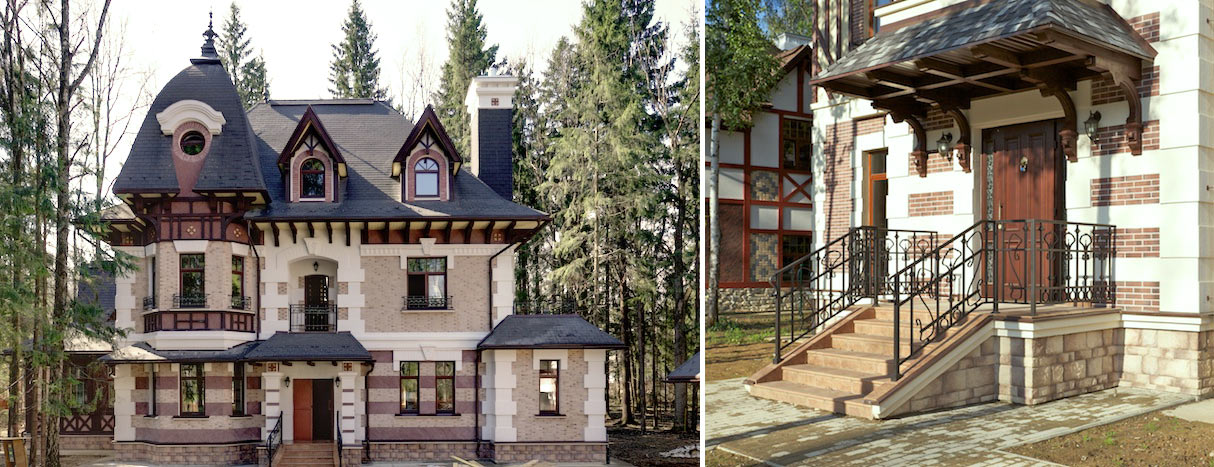
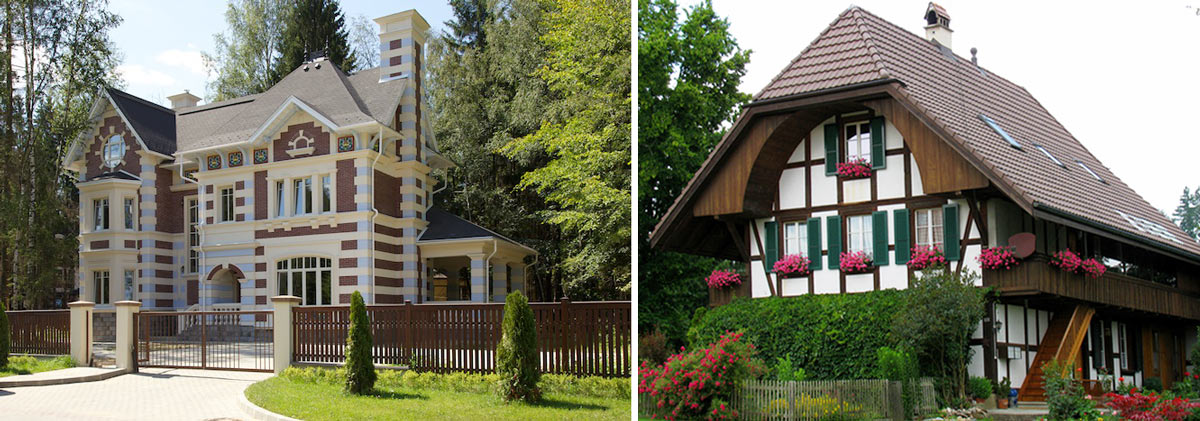



Speaking of the "French style" in the architecture of country houses, we should not forget that we are talking about the signs and elements of style, and design solutions and performance materials, meet modern living conditions. So houses in the style of Provence have glass doors from floor to ceiling, in the style of Chateau - a specially marked foundation, and in the Norman style - balustrades.
Get inspired by "French style" ideas and choose your home's facade!